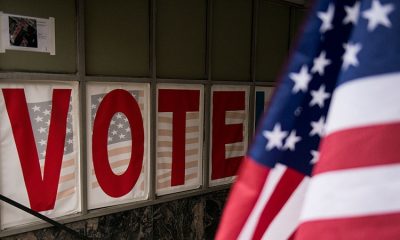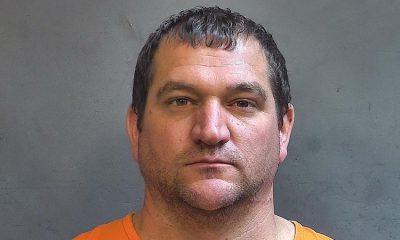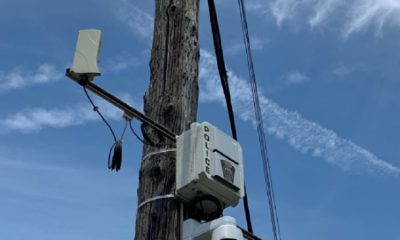Indiana
The death penalty: An overview of Indiana’s convoluted history with the death penalty

Indianapolis, Indiana – In Indiana, the death penalty has a convoluted past and legacy.
Ninety-two men have been put to death in Indiana since the state’s capital penalty laws were first enacted in 1897, according to IN.gov. Two individuals who received death sentences in Indiana were put to death in other states: Alton Colman (Ohio, 2002) and Michael Lee Lockhart (Texas, 1997).
According to IN.gov, the Indiana State Prison in Michigan City has served as the location of every execution carried out by the State of Indiana since 1897. But not every execution in Indiana takes place at the Michigan City state prison.
There have been sixteen executions in Terre Haute, Indiana since the federal prison there was equipped with a death chamber by the United States government in 1995. The Federal Bureau of Prisons reports that 13 of those executions have taken place since 2020.
In terms of executions since 1976, Indiana is not among the top 10. In the past 48 years, there have been 20 executions in the Hoosier State. The sum is 15th in the country.
Texas has carried out the most executions since 1976, employing the death penalty 578 times, according to Statista data. Oklahoma had 119 executions, ranking second on the list.
With 2.83 executions per 100,000 people, Oklahoma has the highest rate of executions nationwide, according to the Death Penalty Information Center.
Over the past 127 years, Indiana’s standards for the death penalty have evolved, notably the manner in which executions are conducted. According to IN. gov, hanging was the mandatory method of execution in Indiana between 1897 and 1913. Before the legislation was altered, thirteen people were hanged in the Hoosier State.
Every execution conducted between 1913 and 1995 used electrocution. In Indiana, 65 inmates died by electrocution between 1914 and 1995.
The final prisoner to die by electrocution in Indiana State Prison was Gregory Resnover, who was put to death in 1994. Indiana started performing executions by lethal injection in 1995.
Nineteen people have been put to death by lethal injection since then. The first prisoner in Hoosier State to be executed by lethal injection was Tommie J. Smith, who was found guilty of murder in Marion County in 1981, according to IN.gov.
Since 2009, when Matthew Eric Wrinkles was killed by lethal injection, the State of Indiana has not carried out an execution. In 1994, Wrinkles was found guilty of the murders of three persons, according to IndyStar.
Before being put to death, Wrinkles made an appearance via remote feed from prison on an episode of “The Oprah Winfrey Show.”
Wrinkles is among the few well-known inmates who were put to death in Indiana. Timothy McVeigh, who was put to death in 2001 at the federal prison in Terre Haute, is presumably the most well-known of them.
The 1995 bombing of an Oklahoma City federal facility was carried out by McVeigh. During the blast, over 150 individuals died, 19 of them were children.
Dustin John Higgins was the last inmate to be executed at the federal penitentiary in 2021. In July 2021, the US Department of Justice formally put an end to executions.
In 1972, Indiana’s state executions were likewise temporarily suspended after the US Supreme Court ruled that all state statutes pertaining to the death sentence were unconstitutional. The Furman v. Georgia ruling held that the death sentence was unconstitutional because it violated the clause in the U.S. Constitution that forbids “cruel and unusual punishment” for convicts.
However, at the time, only two judges of the United States Supreme Court believed that the death penalty was totally unconstitutional. States were permitted to amend death penalty laws since just two judges shared that opinion.
Among the states that updated their legislation was Indiana. As a result of Furman v. Georgia, the Indiana General Assembly passed new legislation pertaining to the death penalty in 1993, according to IN.gov.
According to IN.gov, the 1993 statutes passed by the Indiana General Assembly were overturned by the Indiana Supreme Court in 1977 in response to the precedent set by the U.S. Supreme Court in Woodson v. North Carolina, which determined that the Tar Heel State’s mandatory death penalty for those found guilty of first-degree murder was unconstitutional.
The death sentence was then swiftly reinstated in October 1977 by new legislation passed by Indiana’s General Assembly. For the past 47 years, the statutes have been in effect.
In Indiana, the death penalty is currently reserved for cases of murder. According to Indiana State regulations, prosecutors may only request the death penalty if they can demonstrate that the accused has at least one of the 18 “aggravating factors.”
For defendants who satisfy at least one of the 18 aggravating circumstances, prosecutors may additionally seek life in prison without the possibility of release. In Indiana, life without parole was added to the list of possible sentences for capital murder in 1993.
A death sentence imposed in Indiana may go through three layers of appellate review, according to IN.gov. The governor of Indiana may also grant clemency requests from offenders.
According to IN.gov, the Indiana Public Defender Commission was established by the General Assembly of the Hoosier State in 1989 to “set standards for the appointment and compensation of attorneys appointed to represent persons facing the death penalty.”
The average trial fee for a capital case in Indiana was $385,458, according to data gathered by the General Assembly in 2015. This amount is over ten times higher than the trial and appeal fees for cases where the prosecution is requesting a maximum sentence of life in prison without the possibility of release.
Larry Hicks and Charles Smith are two men who were given death sentences in Indiana but were later found not guilty. For murder, both were found guilty between 1978 and 1983. In their separate retrials, the two men were found not guilty.
In the United States, there were 2,363 death row inmates as of 2022, according to a study by Death Row USA.
According to data from the Death Penalty Information Center, 27 states in the United States allow the death penalty. Executive action has, however, put a halt to executions in six of those states.
Indiana borders Illinois and Michigan, two states that forbid executions. Six states—Oregon, Ohio, California, Arizona, Pennsylvania, and Tennessee—have put an end to the death penalty.
Indiana has witnessed two high-profile cases involving the death sentence in the past year alone.
Elliahs Dorsey, who is charged with killing Indianapolis Metropolitan Police Department Officer Breann Leath in April 2020, may face the death penalty, a judge decided in May. Prosecutors declared in July that Orlando Mitchell, who is charged with killing Marion County Sheriff’s Deputy John Durm, will be given the death penalty.
In Mitchell’s case, a pretrial conference has been set for March 1. The jury trial for Dorsey is scheduled to start on February 12.
-

 Local News2 weeks ago
Local News2 weeks ago3 Indiana school districts asking voters for funding in May primary election
-

 Local News2 weeks ago
Local News2 weeks agoHendricks Co. Sheriff’s deputy dies after being electrocuted at crash scene
-

 Local News2 weeks ago
Local News2 weeks agoMyles Rice, a former Pac-12 Freshman of the Year, has committed to Indiana
-

 Local News1 week ago
Local News1 week agoMan who won the primary election despite being accused of murder was found guilty of a lesser crime
-

 Local News2 weeks ago
Local News2 weeks agoIndiana limits abortion data for privacy under near-total ban; some GOP candidates push back
-

 Local News2 weeks ago
Local News2 weeks agoRepresentative from Indiana invites people to attend the IBLC town hall series
-

 Local News1 week ago
Local News1 week agoA decrease in gun violence signifies South Bend’s accomplishment
-

 Local News1 week ago
Local News1 week agoWhile searchers continue to look for missing kayakers, experts warn of a deadly dam in the White River






Leave a Reply